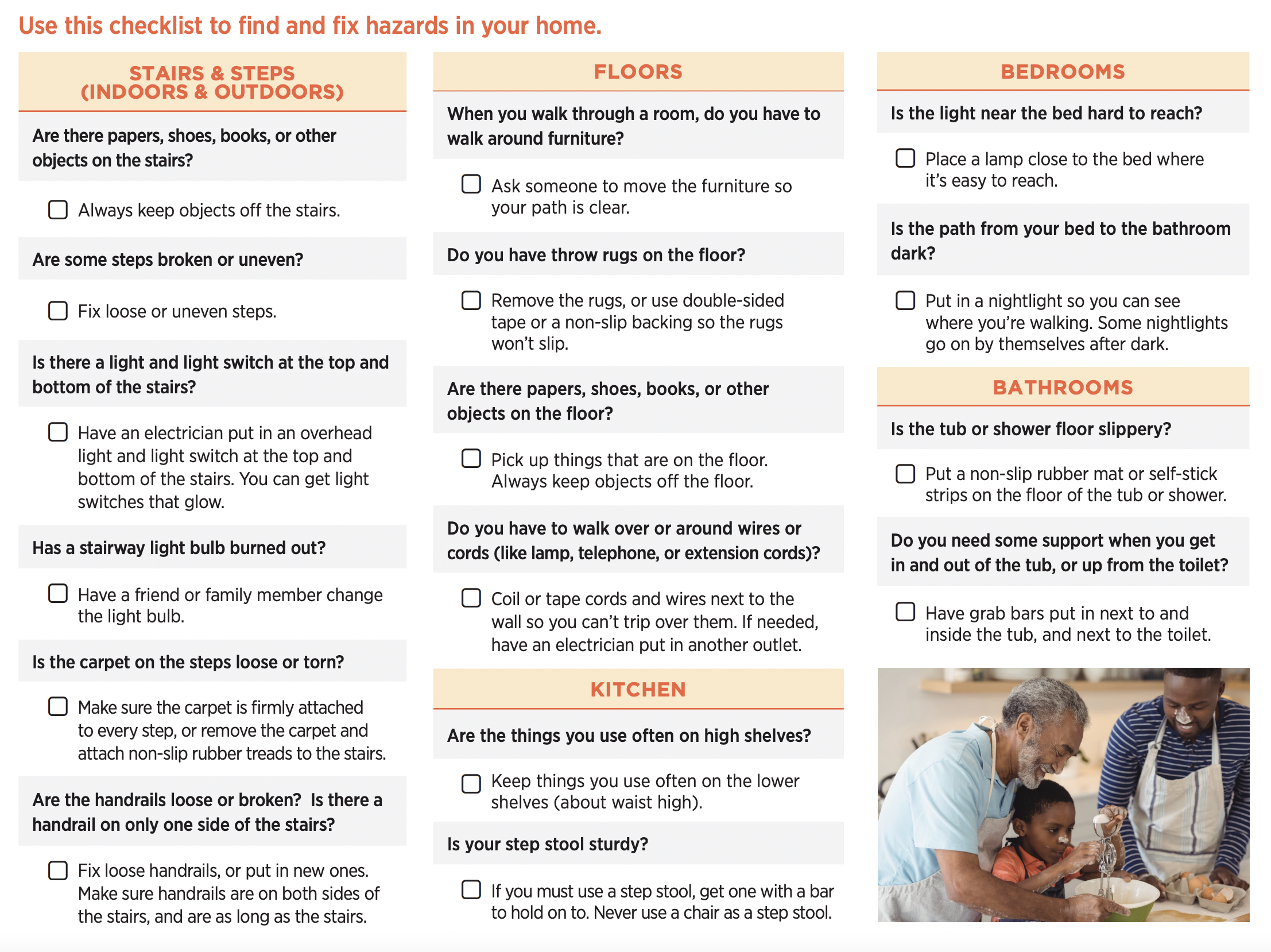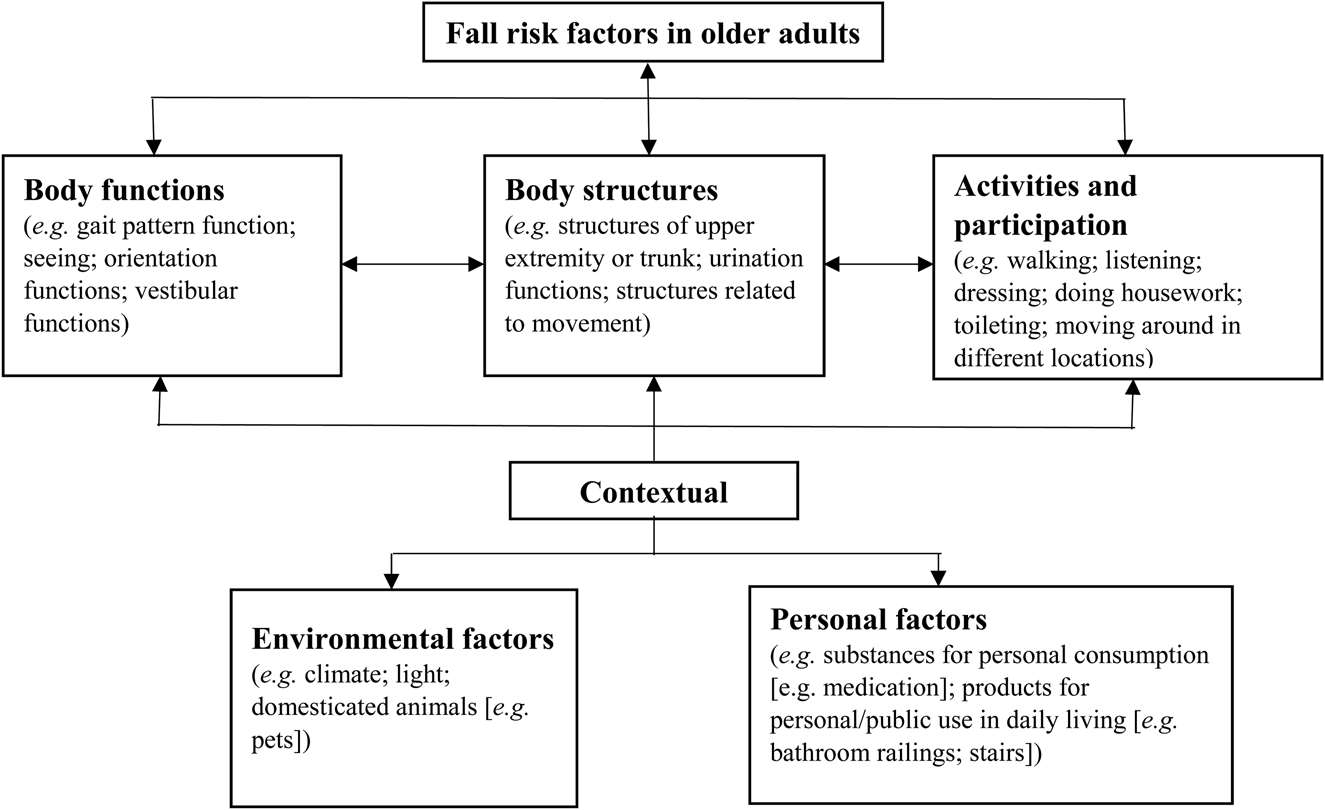Facts About Dementia Fall Risk Uncovered
Facts About Dementia Fall Risk Uncovered
Blog Article
All about Dementia Fall Risk
Table of ContentsRumored Buzz on Dementia Fall Risk4 Easy Facts About Dementia Fall Risk DescribedDementia Fall Risk - QuestionsDementia Fall Risk Things To Know Before You Get This
An autumn risk assessment checks to see just how likely it is that you will certainly drop. It is primarily provided for older adults. The evaluation usually includes: This consists of a collection of inquiries about your total wellness and if you've had previous drops or problems with equilibrium, standing, and/or strolling. These tools check your strength, balance, and gait (the method you walk).STEADI consists of testing, examining, and intervention. Treatments are referrals that may decrease your risk of dropping. STEADI consists of three steps: you for your risk of falling for your risk elements that can be improved to try to stop falls (for instance, equilibrium issues, damaged vision) to minimize your danger of dropping by using efficient methods (for instance, supplying education and learning and sources), you may be asked numerous questions including: Have you dropped in the previous year? Do you feel unsteady when standing or strolling? Are you worried regarding falling?, your company will certainly evaluate your toughness, equilibrium, and stride, utilizing the complying with autumn analysis tools: This test checks your gait.
Then you'll take a seat again. Your supplier will check the length of time it takes you to do this. If it takes you 12 seconds or even more, it may mean you go to greater danger for a fall. This test checks toughness and balance. You'll sit in a chair with your arms crossed over your upper body.
The settings will certainly get more difficult as you go. Stand with your feet side-by-side. Relocate one foot midway ahead, so the instep is touching the big toe of your other foot. Relocate one foot fully before the various other, so the toes are touching the heel of your other foot.
The Ultimate Guide To Dementia Fall Risk
Many drops happen as an outcome of multiple contributing elements; as a result, managing the risk of falling starts with recognizing the factors that add to drop danger - Dementia Fall Risk. A few of one of the most appropriate threat factors include: Background of prior fallsChronic medical conditionsAcute illnessImpaired stride and equilibrium, lower extremity weaknessCognitive impairmentChanges in visionCertain high-risk drugs and polypharmacyEnvironmental variables can likewise increase the threat for drops, including: Poor lightingUneven or harmed flooringWet or slippery floorsMissing or damaged hand rails and grab barsDamaged or poorly fitted tools, such as beds, mobility devices, or walkersImproper use of assistive devicesInadequate guidance of individuals residing in the NF, consisting of those that exhibit aggressive behaviorsA effective autumn risk administration program needs a thorough professional analysis, with input from all members of the interdisciplinary group

The care plan must likewise consist of treatments that are system-based, such as those that promote a secure setting (proper illumination, hand rails, grab bars, and so on). The efficiency of the treatments need to be reviewed periodically, and the treatment strategy revised as needed to reflect adjustments in the autumn risk analysis. Carrying out a loss threat management system using evidence-based finest technique can minimize the prevalence of drops in the NF, while restricting the potential for fall-related injuries.
The Of Dementia Fall Risk
The AGS/BGS standard advises screening all grownups aged 65 years and older for autumn danger every year. This testing is composed of asking people whether they have fallen 2 or even more times in the previous year or sought clinical interest for a loss, or, if they have actually not fallen, whether they feel unsteady when walking.
Individuals that have actually fallen as soon as without injury should have their equilibrium and stride evaluated; those with gait or equilibrium irregularities ought to obtain added assessment. A background of 1 autumn without injury and without gait or balance problems does not necessitate more analysis beyond ongoing yearly autumn danger testing. Dementia Fall Risk. A fall danger analysis is called for as part of the Welcome to Medicare examination

Dementia Fall Risk - Questions
Documenting a falls background is among the top quality indications for autumn avoidance and administration. An important part of danger analysis is a medication evaluation. Numerous classes of medications raise fall threat (Table 2). copyright medicines particularly are independent forecasters of falls. These drugs often tend to be sedating, modify the sensorium, and harm balance and stride.
Postural hypotension can typically be reduced by lowering the dosage of blood pressurelowering drugs and/or stopping medicines that have orthostatic hypotension as a side result. Use of above-the-knee assistance hose pipe and sleeping with the head of the bed elevated may additionally decrease postural reductions in high blood pressure. The recommended aspects of a fall-focused physical evaluation are displayed in Box 1.

A Yank time higher than or equal to 12 secs suggests high loss danger. Being unable to stand up from a chair of knee elevation without making use of one's arms suggests boosted loss danger.
Report this page